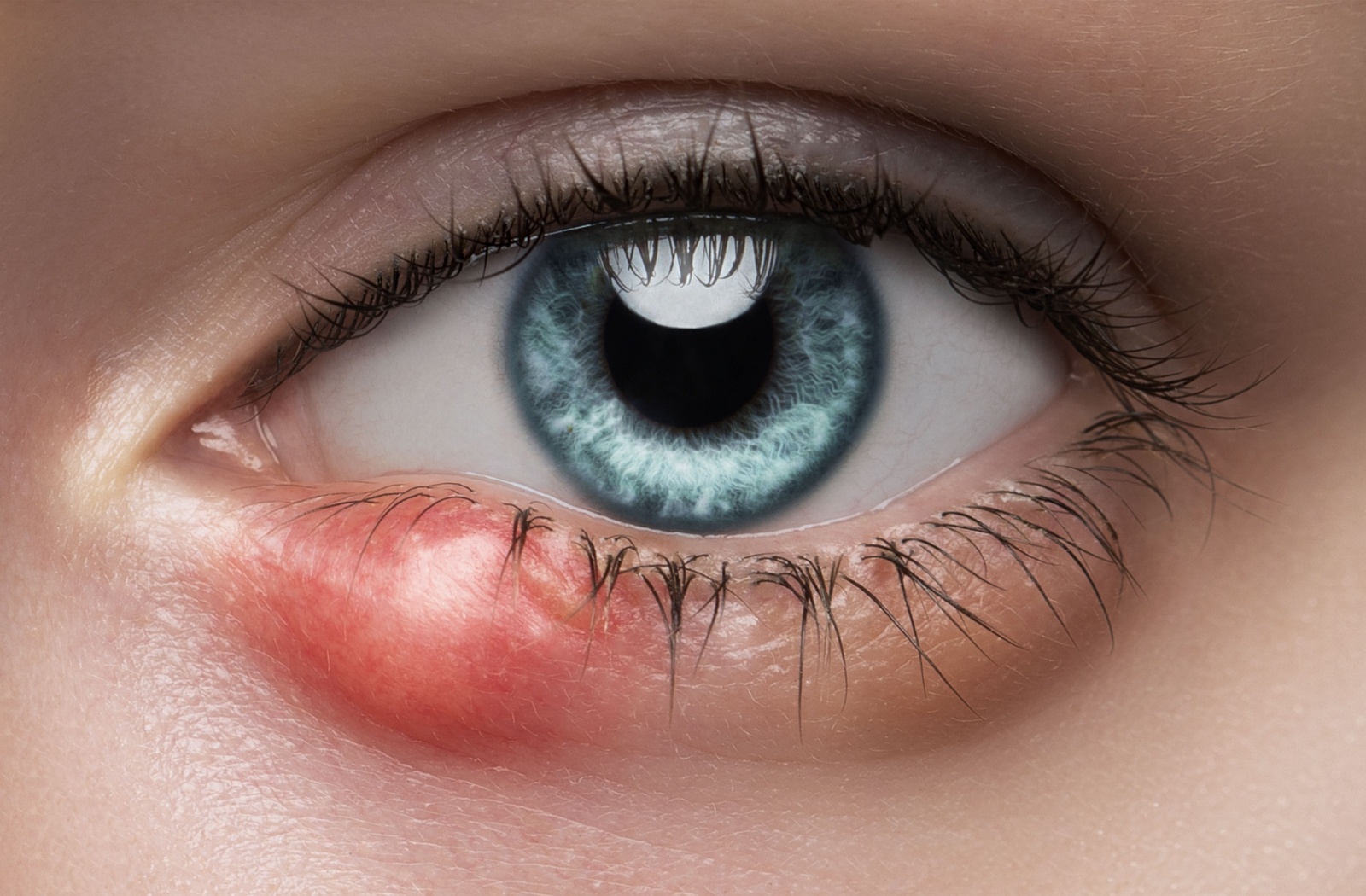If you’ve ever woken up with a red, swollen, watery, and uncomfortable eye, you’re not alone. It could be pink eye or a stye, two of the most common eye diseases. However, these conditions have different symptoms, risks, and treatments, making it crucial to learn the difference between pink eye and styes.
Pink eye primarily affects the thin tissue lining the inside of your eyelids and the white part of your eye. Meanwhile, styes are small lumps that form around the edge of the eyelid, often appearing like a small bump or pimple.
What Is Pink Eye?
Pink eye, medically known as conjunctivitis, develops when the conjunctiva—the transparent membrane lining your eyelid and eyes—becomes inflamed. The small blood vessels become irritated and swollen, making them more prominent against the whites of your eyes and causing a reddish-pink appearance.
There are three main types of pink eye:
- Viral conjunctivitis: This develops due to a viral infection and is highly contagious through direct contact with infected surfaces or secretions.
- Bacterial conjunctivitis: This is caused by a bacterial infection and is also highly contagious.
- Allergic conjunctivitis: This develops due to an allergic reaction. It’s often accompanied by itching, swelling, and excessive tearing but is not contagious.
Typically, you can recognize pink eye by the persistent redness and itchy sensations in your eyes. You may also experience:
- Mild swelling
- A gritty feeling in one or both eyes
- Discharge that forms a crust during the night
- Excessive tearing
- Light sensitivity
If you notice any of these signs, it’s time to visit your optometrist. They can diagnose your specific type of pink eye and help you find relief from your symptoms.
What Is a Stye?
A stye is a red, uncomfortable bump that develops near the edge of your eyelid. It is easily mistaken for a boil or a pimple and often causes mild swelling in the surrounding area.
These are caused by a bacterial infection inflaming the oil glands along the edge of your eyelid. The symptoms can be persistent and uncomfortable, often taking some time to recede. Fortunately, they’re also not contagious and tend to clear up within a few days.
The symptoms of a stye include:
- A visible red lump on the eyelid
- Swelling
- Tearing
- A gritty, scratchy feeling in the eye
- Increased sensitivity to light
- Crust around the eyelid
These symptoms can easily be mistaken for pink eye, making it easy to misdiagnose the condition without a professional’s help. If you think you’re dealing with a stye, never try to pop it yourself. This spreads the bacteria across your eyes and can lead to a worse infection.
How to Tell the Difference
If you’re dealing with constant redness, tearing, discomfort, and more, it’s time to visit an eye care professional. They’ll use their experience to diagnose your specific condition and guide you going forward.

However, if you can’t get to an optometrist right away, there are some key differences you can look out for:
- The location of the swelling. Pink eye usually affects the whites of your eyes and affects both simultaneously. Meanwhile, styes usually only affect one eye at once.
- The type of discharge. Pink eye often causes a watery, yellow, or green discharge that can crust over. Styes, on the other hand, rarely cause any discharge, though they may leak pus from a small bump.
- The specific type of discomfort. Pink eye often causes itching, stinging, and gritty sensations. Styes often cause localized tenderness and pain surrounding a small bump.
So if you think you’ve narrowed down your specific condition, what do you do?
How to Treat Pink Eye
If you suspect you’re experiencing pink eye, you should visit your optometrist for a diagnosis. Treating pink eye depends on which specific type you’re experiencing:
- Allergic pink eye: This can be treated with over-the-counter allergy medication and allergic eye drops designed to reduce inflammation.
- Bacterial pink eye: This type can be treated with antibiotic eye drops or ointments. It’s important to finish the full course of medication, even if symptoms improve.
- Viral pink eye: Unfortunately, there isn’t a specific treatment for viral pink eye. The virus must run its course, but you can alleviate symptoms by applying warm compresses and using over-the-counter lubricating eye drops.
While your symptoms are receding, proper hygiene is key. Make sure you keep your hands clean and avoid touching your eyes, as pink eye is highly contagious. You should also disinfect surfaces you’ve touched if you’re experiencing viral or bacterial pink eye.
How to Treat Styes
Most styes will clear up on their own within a week or two without any special treatments. However, you can speed up the process by:
- Applying warm compresses for 10 minutes at a time, 3-4 times a day.
- Using over-the-counter pain relievers like ibuprofen or acetaminophen to help with any discomfort.
- Avoiding rubbing your eyes and touching the stye, as this can spread bacteria and make it worse.
If your stye doesn’t improve within a few days, you should visit your optometrist.
Accessible Eye Care in St. Catharines
Pink eye and styes are both common eye conditions, and it’s easy to mistake one for the other. While they have similar symptoms, a professional diagnosis is key—it’s the first step to finding relief.
At EyeCare Niagara, we know how to help. Book an appointment with our team today, and let our team help you find the relief you deserve.




